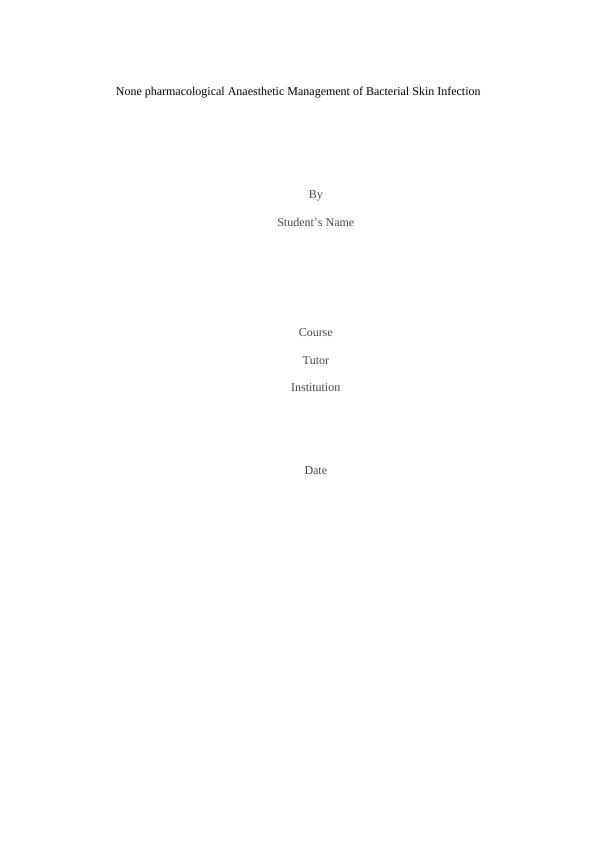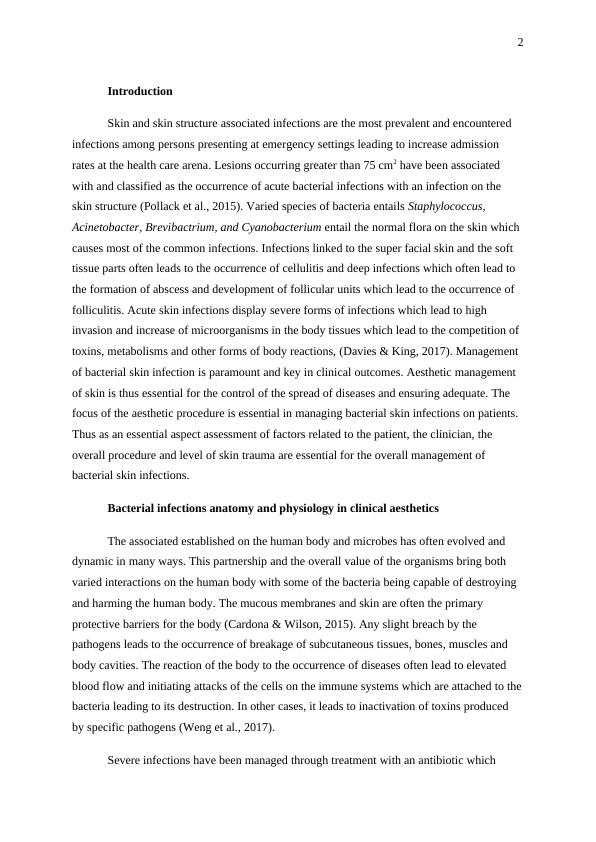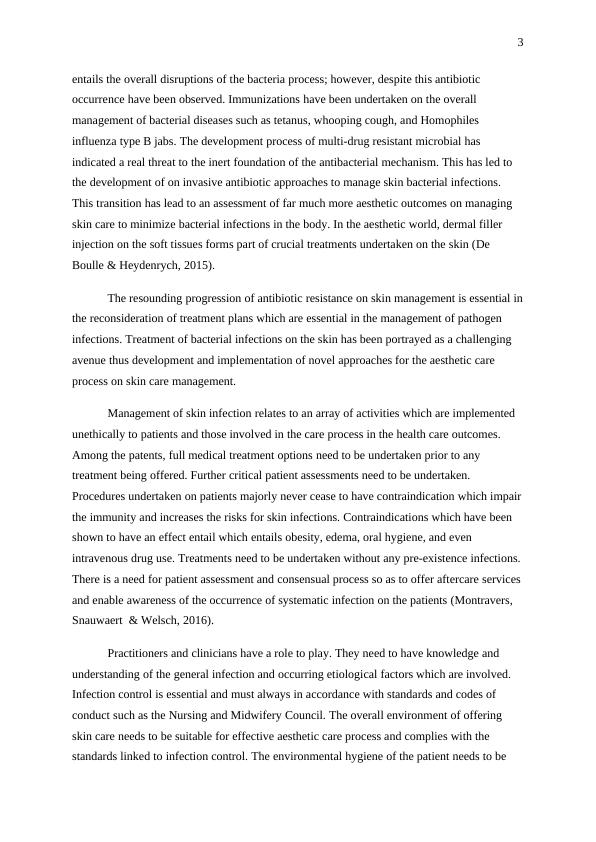Non-pharmacological Anaesthetic Management of Bacterial Skin Infection
7 Pages2227 Words358 Views
Added on 2022-11-14
About This Document
This article discusses the non-pharmacological anaesthetic management of bacterial skin infections. It covers the anatomy and physiology of bacterial infections, the role of aesthetic management, and the importance of patient and practitioner knowledge. The article also provides treatment options and aftercare management.
Non-pharmacological Anaesthetic Management of Bacterial Skin Infection
Added on 2022-11-14
ShareRelated Documents
End of preview
Want to access all the pages? Upload your documents or become a member.
Understanding Pathogens and Antibiotics: A Comprehensive Study
|11
|3914
|127
Pathophysiology and Treatment of Cellulitis
|7
|1683
|83
Sinusitis Antibiotic Treatment Protocol
|4
|1017
|440
NRSG 257 : Child, Adolescent and Family Nursing
|9
|2370
|117
Why We Can Never Eradicate Infectious Disease
|21
|5810
|447
CHEM 480A- Genomics and Infectious Diseases | Assignment
|8
|2020
|130



